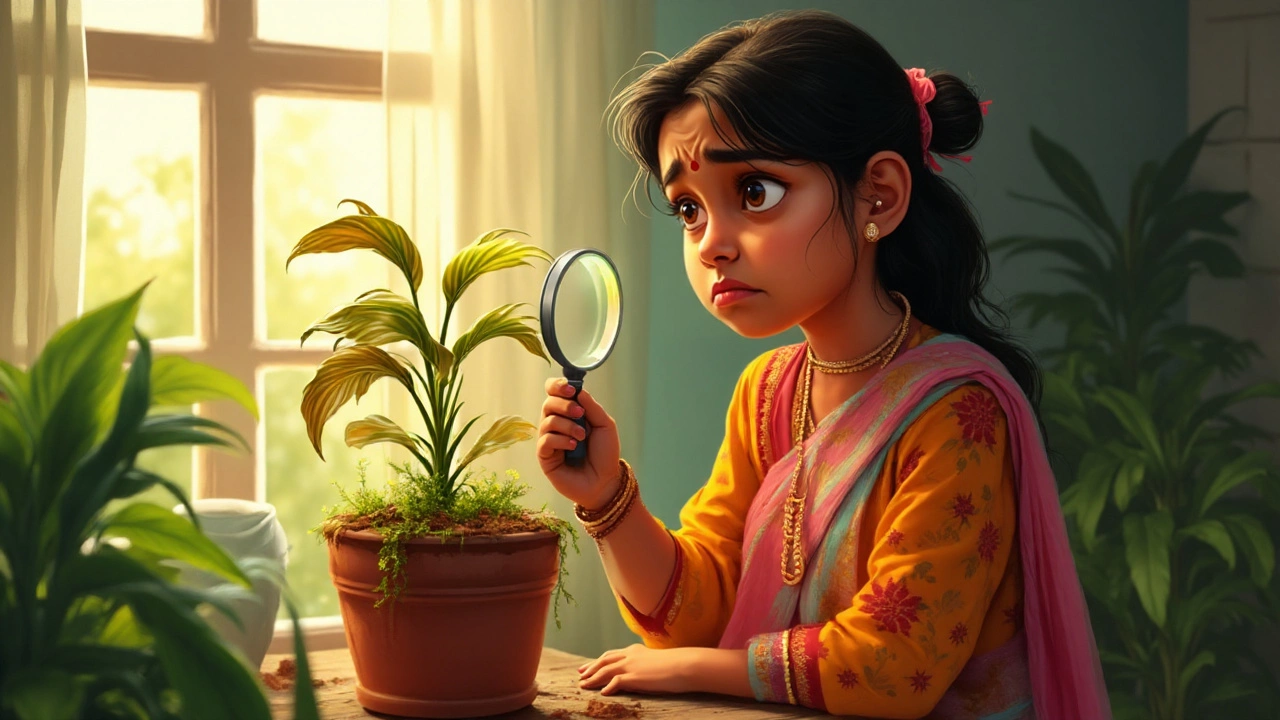Struggling with a wilting or browning plant? Learn how to identify problems, revive dying houseplants, and keep your greenery thriving.
How to Nurse a Plant Back to Life: Simple Steps for Dying Houseplants and Garden Plants
When a plant starts dropping leaves, turning yellow, or wilting even after watering, it’s not dead yet—it’s screaming for help. nursing a plant back to life, the process of reviving a stressed or dying plant through targeted care. It’s not magic. It’s observation, timing, and fixing what went wrong. You don’t need fancy tools or expensive fertilizers. You just need to stop guessing and start listening to what the plant is telling you.
Most plants die from the same mistakes: too much water, not enough air around the roots, or soil that’s turned to concrete. root rot, a fungal decay caused by soggy soil that eats away at plant roots is the silent killer in Indian homes. You water because you think the plant is thirsty, but the real problem is the water isn’t draining. overwatered plant, a plant suffering from constant moisture that starves its roots of oxygen looks exactly like an underwatered one—wilted, brown edges, limp leaves. The fix? Stop watering. Pull it out. Check the roots. Cut off the mushy, black parts. Let the healthy white roots dry for a day. Repot in fresh, airy soil. That’s it.
Soil matters more than you think. Dense clay soil in Indian gardens holds water like a sponge. garden soil improvement, adding organic matter or perlite to make soil drain better and breathe easier is the first step to saving any plant outdoors. For balcony plants, a small pot with no drainage holes is a death trap. Even hardy plants like basil or jasmine can’t survive if their roots are drowning. You don’t need to buy new pots—just drill holes in the bottom. Or place the pot on bricks to let water escape.
Light is another silent factor. A plant that was thriving on your balcony last month might be dying now because the sun moved. In India, afternoon sun is brutal—especially in summer. Hydrangeas, for example, burn easily. But a plant that’s been in low light for months won’t bounce back just because you moved it into full sun. Recovery needs gradual adjustment. Start with morning light. Slowly increase exposure. Don’t rush it.
And don’t reach for fertilizer too soon. A dying plant doesn’t need food. It needs rest. Fertilizer burns weak roots. Wait until you see new green growth—tiny leaves or shoots—before adding anything. Until then, focus on water, air, and light. That’s the triangle of recovery.
You’ll find posts here that show you exactly how to fix overwatered houseplants, how to tell if your soil is too dense, how to spot early signs of root rot before it’s too late, and which plants in India bounce back easiest after neglect. These aren’t theory pages. These are real fixes from gardeners who’ve been there—saved a dying zinnia after rabbits ate half of it, brought back a wilting basil on a hot terrace, revived a hydrangea that was left in full sun. If your plant is still breathing, it’s not too late. This collection gives you the steps, the why, and the timing. No fluff. Just what works.
